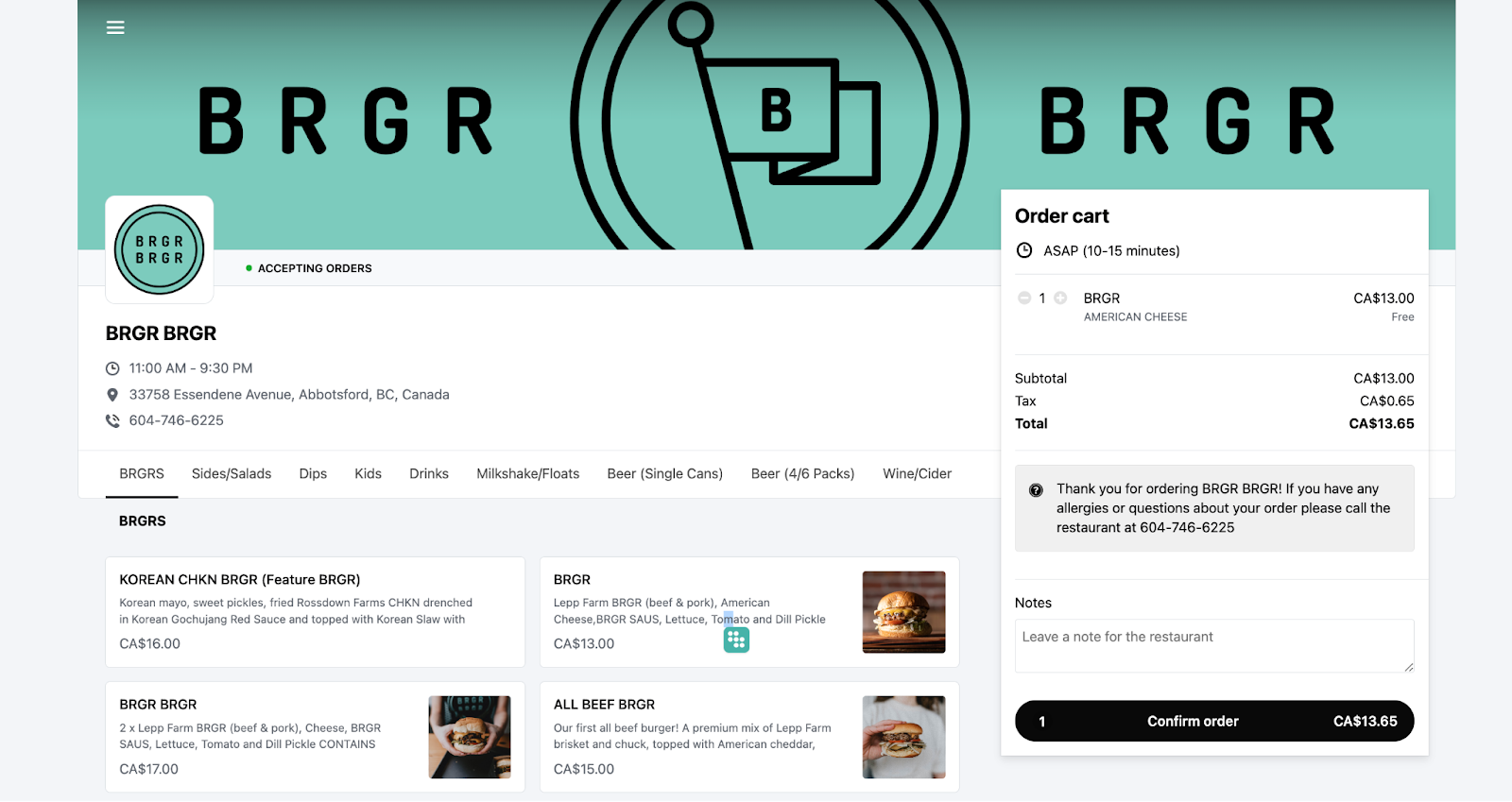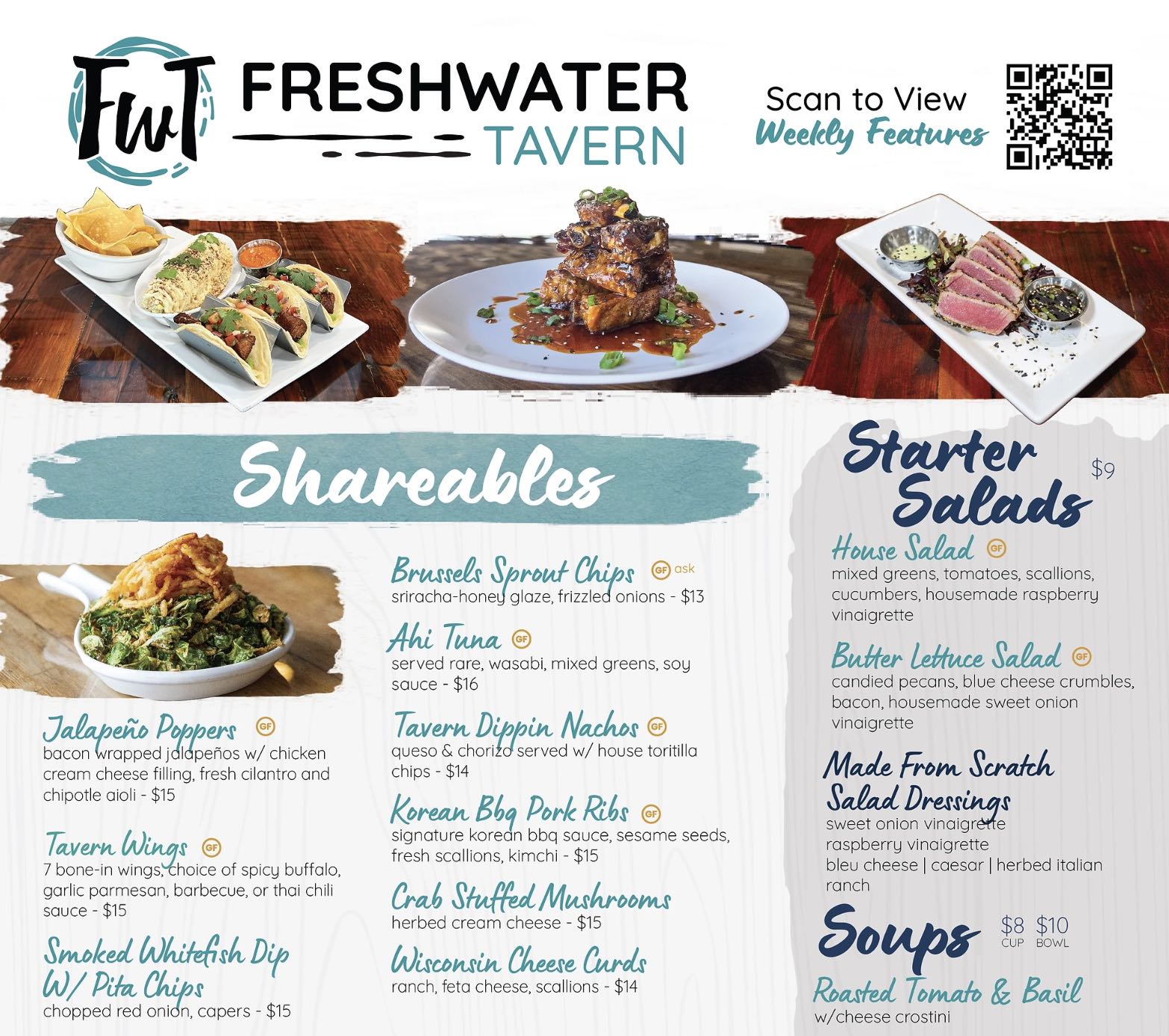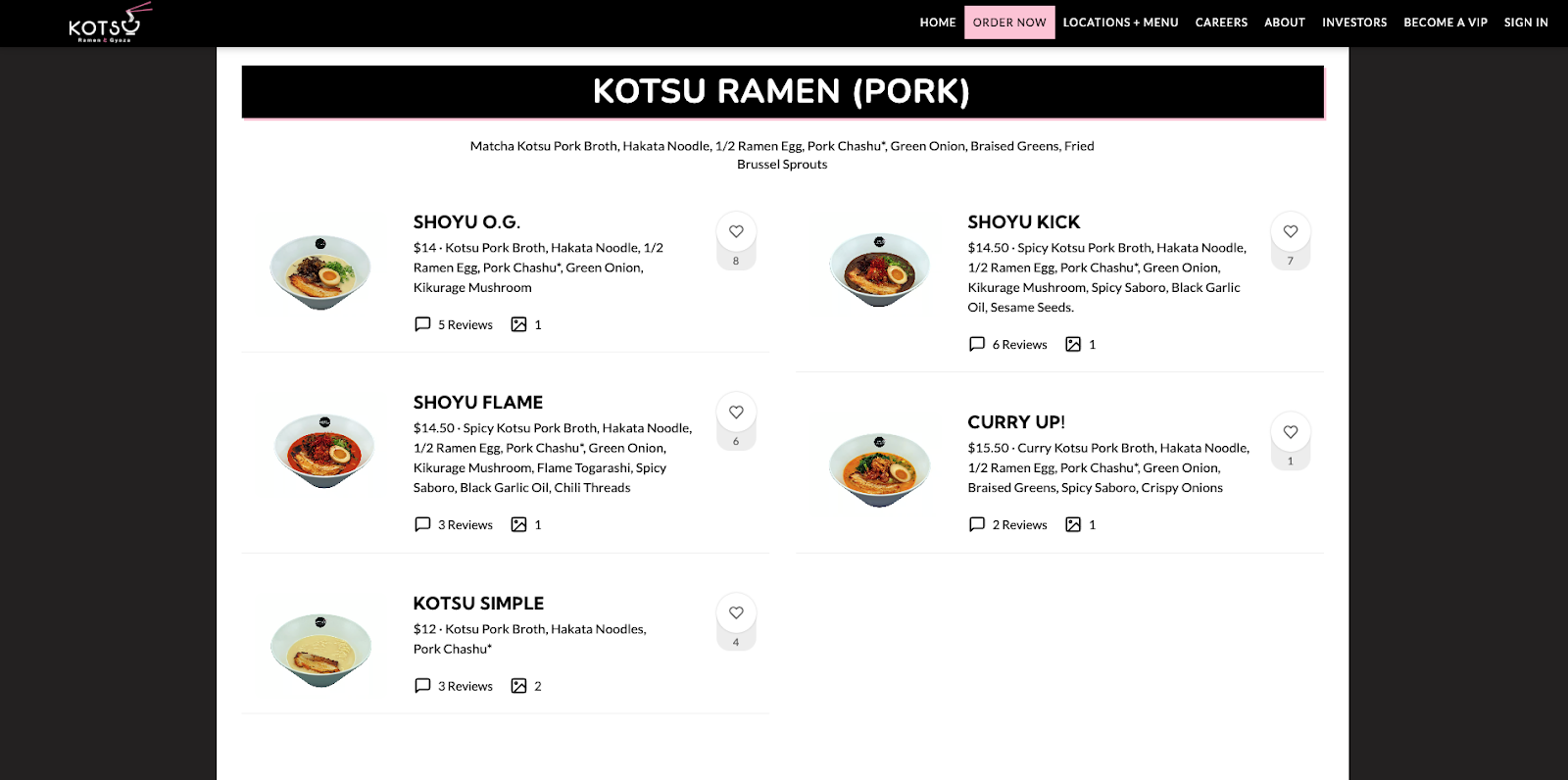
It’s no secret that the COVID-19 pandemic popularized digital menus for restaurants. By swapping paper menus for online ones, restaurants reduced contact between staff and customers.
While most aspects of the dining experience have returned to normal, many restaurants are keeping digital menus for good, and others are adopting them for the first time, because of their business benefits.
If you’re curious about implementing and designing digital menus at your restaurant, keep reading to learn:
- The types of digital menus for restaurants
- Features and benefits of digital menus
- How to design a digital menu
- How to implement a digital menu at your restaurant
- Examples of digital menus at restaurants
Discover the trends shaping the restaurant industry
A global survey of over 8,000 hospitality operators and guests reveals how operations and consumer preferences have shifted in the past year.
Types of digital menus for restaurants
The phrase “digital menu” can refer to a number of things, including:
- Static menus: Static menus don’t change and aren’t interactive, like digital menu boards at fast food restaurants or PDF menus on restaurant websites. Customers use static menus to browse dishes and place orders with servers.
- Interactive menus: Customers use interactive menus, either on their own mobile devices or on a restaurant’s (such as via a self-service kiosk) to view menu items, place orders, and pay.
- Self-service kiosks: A kiosk is a stationary, interactive menu built into a tablet or computer that primarily fast food restaurants use to let customers explore options and place and pay for orders.
- QR codes: At restaurants that use digital interactive menus, customers can scan a QR code in their vicinity on a mobile device to pull up a digital menu. That digital menu could be interactive or static.
- Mobile ordering: Mobile ordering involves placing and paying for an order through an interactive digital menu on a mobile device. Restaurants can implement mobile ordering for either dine-in or takeout orders.
Features and benefits of digital menus
Digital menus are here to stay thanks to the business benefits they provide, including:
- Flexibility and customization: Unlike paper menus, which need to be reprinted, digital menus can be updated instantly and often. You can even use them to change prices in real time depending on inventory costs. When your digital menu is linked to your POS, it can automatically show customers which dishes are sold out.
- Improved efficiency and accuracy: Digital menus improve accuracy because customers directly input their orders, eliminating the risk of a server mishearing an item. By swapping paper menus for digital ones, restaurants also forego printing costs.
- Better customer experience: Digital menus free staff up from the repetitive task of order taking so they can focus on providing hospitality in other ways.
- Increased revenue and profitability: When customers can place orders themselves and don’t have to wait for servers to close out tabs, table turnover speeds up. And, with the right design, digital menus can encourage customers to order more food.
- Enhanced data collection and analysis: Digital menu software gives data on who’s ordering what, which payment methods they’re using, and more, to help you power business decisions.
How to design a digital menu
Implement these digital menu design best practices to improve the guest experience and boost sales.
Choose the right font, color, and layout
Your digital menu needs to be easy to read and navigate. Follow these basic design principles to achieve that criteria.
Opt for a simple font, such as a sans serif one, to increase legibility. Use a thick font weight, rather than a light one, to improve on-screen readability.
When selecting colors, prioritize contrast and legibility above all else. A black-and-white color combination is not only classic, but it’s also easy to read. But what about your brand colors? Use them for emphasis on your digital menu. For example, if orange is one of your brand colors, you could use it to underline the names of your most popular dishes.
It’s important to optimize the layout of your digital menu for various devices. For example, interactive, mobile digital menus should be oriented for vertical scrolling, while static digital menus on TV screens should be laid out horizontally. If you’re going to use an interactive mobile ordering menu, create tabs for easy navigation between menu sections.
Want to see these tips in action? Check BRGR BRGR’s online ordering menu. The menu’s design is easy to read, with dark text over a light background. It also incorporates the brand’s colors (black and turquoise), creating a visually appealing look that represents the BRGR BRGR’s style.

The online ordering menu is organized into different tabs for each menu category, such as BRGRS, sides and drinks, making it easy to navigate.
Leverage menu engineering
After you’ve mastered the basics of digital menu design, you can experiment with menu engineering. Menu engineering involves designing your menu in such a way that it drives sales to your most profitable items, and increases the popularity of other menu items.
An example of a menu engineering tactic is placing icons, like stars, next to your most popular items to bring attention to them.
Another strategy is to limit the number of items on your menu, because oftentimes when consumers have too many options, it’s more difficult for them to make a decision.
Write detailed item descriptions
The beauty of digital menus is that there’s no limit to how much space you can dedicate to each menu item. You can design your menu so that when a customer taps on a menu item, they can see more details.
Use this feature to your advantage by adding detailed item descriptions that entice customers and give them practical information, such as about allergens. You can even note side and drink pairings to boost cross-selling efforts. All of this information reduces the number of questions servers have to answer, which could slow down the ordering process.
Incorporate photos and videos
Another benefit of limitless space on digital menus for restaurants is that you can include photos and videos of every dish on your menu. Photos help customers make decisions, especially when they’re curious about a dish they haven’t tried before. Appetizing photos can also help you sell more.
If you don’t have the resources to photograph every item on your menu, take pictures of the most profitable items to drive more sales to them.
Here’s a look at Freshwater Tavern’s menu, which features appetizing photos of different dishes including appetizers, entrees and more.

Optimize for different devices and screen sizes
While a static, PDF menu is a good solution to put on your website initially, it’s best to switch to an interactive, mobile-friendly digital menu. Responsive menus automatically optimize themselves to the screen size they’re being viewed on, which makes things easier for your customers. Fortunately, most digital menu software solutions are mobile-ready.
Make it accessible
Making your digital menu accessible to customers with disabilities is not only a good thing to do, it’s also a legal requirement. In the United States the Americans With Disabilities Act (ADA), and in Canada the Accessible Canada Act (ACA), set guidelines for removing digital barriers.
Here are some things you can do to make your digital menu accessible to all of your customers:*
- Use high-contrast colors
- Describe images with alt-text
- Add captions to videos in your menu
- Include keyboard navigation options for those who can’t use a mouse
*This content should not be considered legal advice. Consult a legal professional.
How to implement a digital menu at your restaurant
Working with a digital menu provider takes the stress out of creating and launching online menus.
1. Choose a digital menu provider
Find a digital menu provider, like Lightspeed, that meets your needs, integrates with your current restaurant tech, gives you access to your data, lets you upload pictures, and meets accessibility standards.
2. Design your menu
Next, design your menu. Interactive digital platforms come with preset designs that meet the criteria listed above. If you’re hiring a designer to create a PDF menu or digital menu board, make sure they meet those standards.
3. Integrate with your existing systems
This step is critical if you’re using an interactive digital menu. Integrate your digital menu with your POS, online ordering, payment processing, inventory, and other restaurant tech platforms so they can share data and function smoothly. Integrations are easier when your digital menu provider is the same as your POS.
4. Train your staff
Set your team up for success by training them on your new technology. For customer-facing self-ordering technology, let staff practice using it so they can anticipate customer questions.
5. Market your digital menu to customers
Once you’ve implemented your digital menu and your staff is comfortable with it, it’s time to let your customers know about it. Make an announcement via digital marketing (social media post, email blast, etc.) and in-store signage. Placing QR codes on every table is an easy way to signal to customers that they need to view your menu online.
Just remember to keep some paper menus on hand for customers who don’t have smartphones.
Example of digital menus at restaurants
Take inspiration from Kotsu Ramen & Gyoza, which uses Lightspeed’s Order Anywhere tool to let customers view the menu and place an order on-premises.

“The Order Anywhere platform is set up exactly the same way as our ordering flow,” explains Kotsu’s Chief Concept Office, Grand Macdonald. “We have a QR code at the start of our restaurant, guests scan the QR code, they can sit down and they can place an order. Those flows match and that’s really, really important.”
Kotsu implements design best practices, like using simple fonts and black and white. The restaurant also describes the ingredients in each item and includes photos of every dish.
Wrapping up: digital menus for restaurants
Even though digital menus began as a necessity for avoiding contact during the pandemic, they’ve earned a place in the hospitality industry for their ability to drive profits and boost efficiency.
Learn about Lightspeed Order Anywhere. Watch a demo today.

News you care about. Tips you can use.
Everything your business needs to grow, delivered straight to your inbox.



